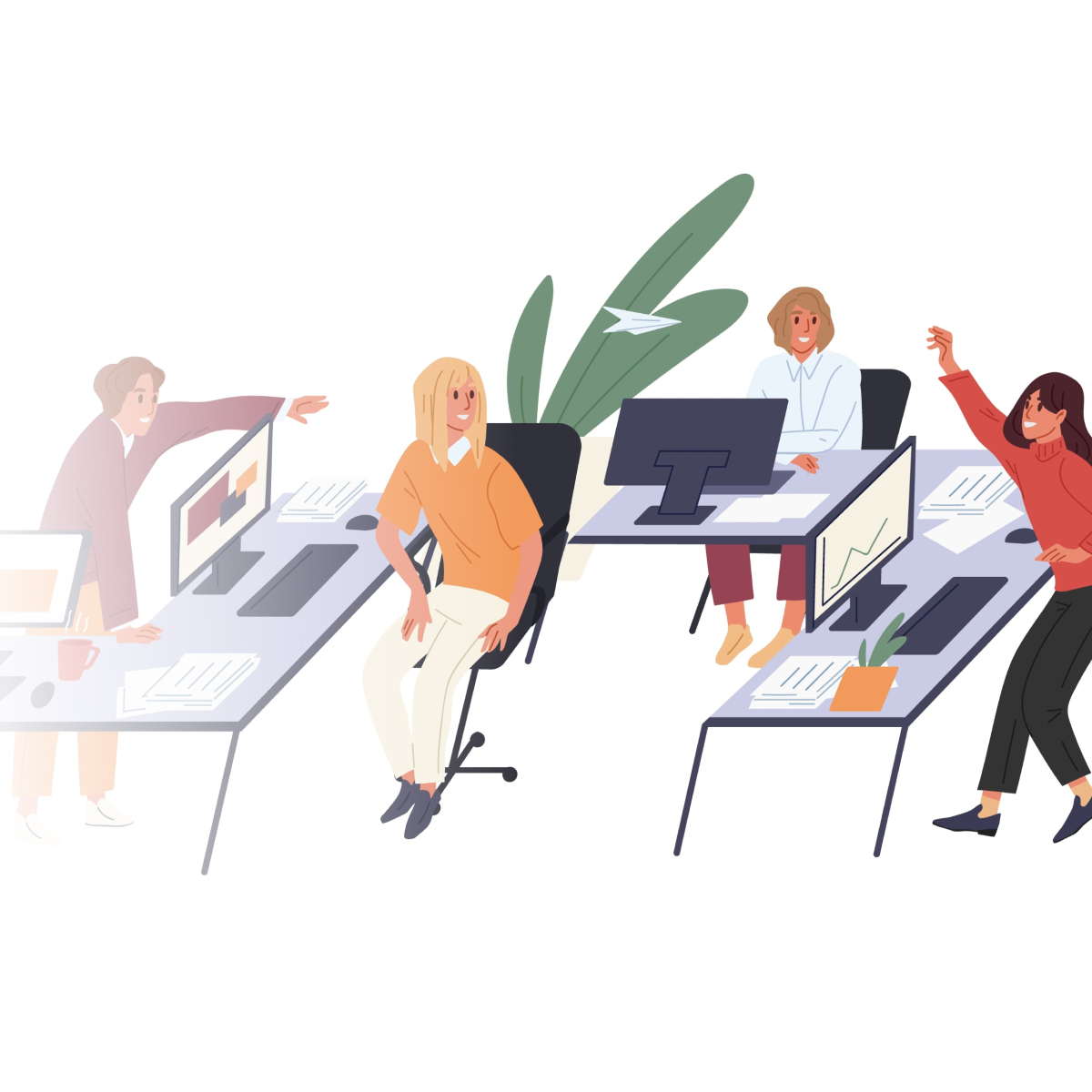ROOM Co-Founder and CEO Brian Chen shares how creative and flexible workspace design facilitates human connection and innovation, urging teams, leaders and businesses to ‘show up’ at work.
There is a big difference between returning to the office and showing up, and how you design your office makes all the difference. Let me explain, first by way of our most recent ROOM holiday party.
In early December last year, we were able to sneak in a holiday party for our New York office just before Omicron overtook the city. Like any scrappy startup, we held our party – modeled after the Danish Julefrokost (my cofounder Morten hails from Denmark, and Julefrokost translates as “Christmas lunch”) – in our office and mobilized an internal party committee. In addition to being responsible for pickled herring and Schnapps, the committee was tasked with converting our daytime office into a hopping nighttime party venue. Committee members came into the office the night prior to clear desks, move Phone Booths from one part of the office to another, and suddenly with an overnight reconfiguration we had holiday cheer, an improvised dance floor, and quite possibly, the newest entry in SoHo’s party scene. The Julefrokost was great fun. It was a special celebration for the team after two years of navigating the pandemic.
Perhaps this all seems fairly mundane, but the feeling I was left with was that we took our office space and once again made it our own in a way that simply had been missing over the prior two years. More than just reconfiguring our space, we re-created it and became coauthors in its evolution.
In that week leading up to our holiday party, Omicron was mostly still a little known Greek letter, testing positivity was in the low single digits in New York, and we had the majority of our New York-based team members at the office. People were meeting each other for the first time, going through in-person onboarding, reconnecting with old colleagues. The buzz was infectious and energizing.
Reflecting on that week and our holiday party, what strikes me is not that we had people returning to the office after a long time away, but that we had people showing up. What does it mean to “show up”? Showing up means that you are making a deliberate choice to be somewhere. It is an expression of solidarity and support for your team. You are opting in to be physically present, co-located, sartorial quirks and bad jokes and awkward moments included. If you are showing up, you are not a casual observer, but your presence is known and felt. It has an influence and impact on the overall environment. Showing up can get messy and noisy, sometimes even annoying. Do you really need to hear your colleague with the laugh that is invariably a few notches too loud? Do you want to endure that moment of silence and be forced to fill it with small talk? Is it convenient or perhaps even embarrassing for your colleagues to see the flowers you receive on Valentine’s Day? At the end of the day, showing up is what it means to be human at work. It is the easiest and perhaps only path to getting to know someone as a human being, and not just as a square or avatar.
Let me say this again: Returning to the office is absolutely not equivalent to showing up. We have all heard stories of people going back to the office, taking Zoom calls all day from a private office, walking hallways masked, and not engaging with colleagues in any kind of meaningful way. At ROOM, we believe that workplace design can help nudge people towards showing up and towards being more human at work – honestly, it’s this notion that gets us out of bed in the morning to do what we do. Our products can facilitate the feeling of connectedness in at least two ways. First, finding your way towards the right mix of space types is not easily accomplished with fixed construction. A modular, prefabricated approach to space – using products such as but not limited to our Phone Booths, Focus Rooms, and Meetings Rooms – can help you iterate your way on short cycles and learn exactly how to nudge the behaviors that you are seeking. Second, when you involve your team into the process of workplace design and you make them part of what you are piloting, you are inviting a version of the co-creation of the workplace that I described with our office holiday party. The best offices are not just “on demand” but are products of co-creation because that is how you create psychological ownership, connectedness, safety, and belonging. ROOM products are tools of creation for all of your employees, and conceived this way, they can help unlock what it means to show up at your company. Time and again, we see this happen with our customers and the creative ways in which they incorporate our products into their offices. Just have a look at some of the fun examples below, and you can see for yourself.
No matter what rituals you put into place virtually, or what amenities you provide to remote employees, there is no replacement for the relationships that are built through in-person time together. You just can’t phone in empathy, and in today’s environment, when it seems that every new startup is touting loudly its remote-first policies, my perhaps controversial take is that we are a very long way from technology being a viable replacement for in-person connectedness, and ultimately it is connectedness that is the greatest antidote to the mental strain of the past two years.
